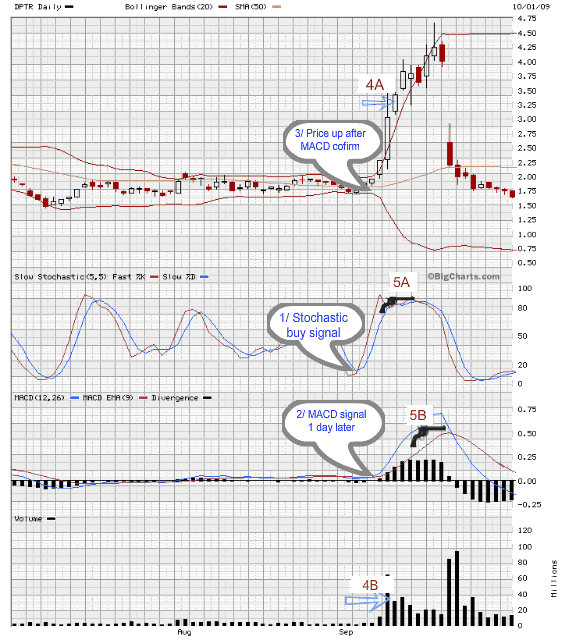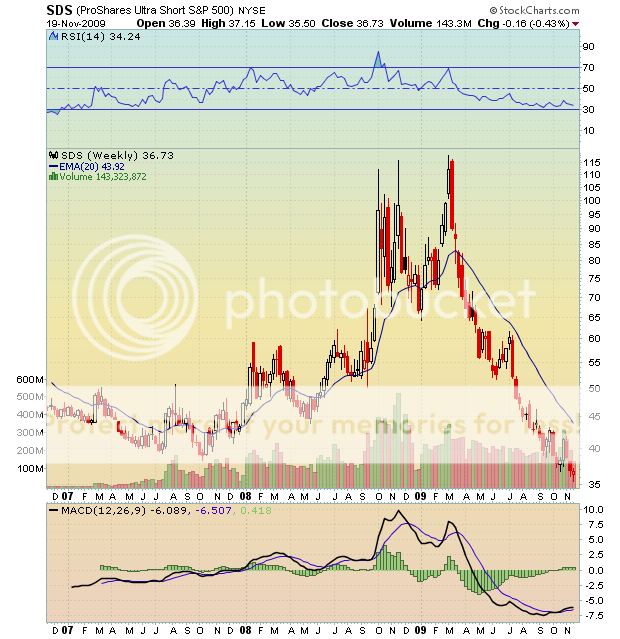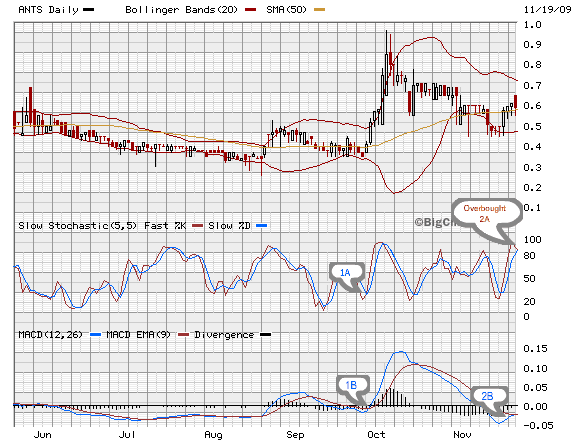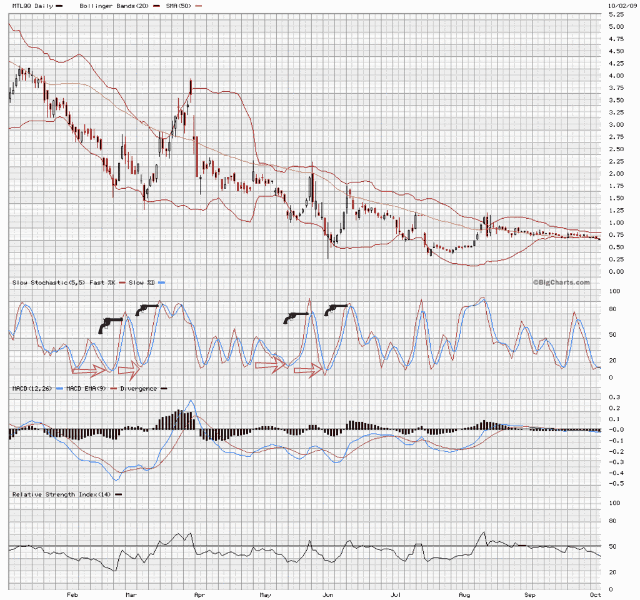HTML:
[COLOR="Navy"]So the question is how do we determine what is a good trade by looking at the weekly charts?[/COLOR]
The weekly chart give me an overview of the health of the company. SDS has lost about two third of its value but it still doesn't seem to be ready for crossing back to get above the 20EMA.
By studying the weekly long term 3-year chart
I concluded that SDS is either a candidate for short, and it's not good for a long position. Sorry for my unclear expression previously, it should have been:
Use the weekly long-term 3 or 5-year chart to determine if the stock is a candidate for long, short or there's nothing of interest here. I tried to say:
Use it to determine whether I should say yes or no in term of further studying before buying (long) the stock.
How I study the daily chart:
Now just say that I've found that ANTS is a good company for further study, the 6-month daily chart shows that it's registered a positive MACD crossing yesterday, the current price is above the 50-day moving average, but I don't consider this is a good candidate for purchase "immediately" since the Slow Stochastic is in the overbought situation. MACD signal is normally behind Stochastic but this time the distance is a bit too far.
Buy at the arrow and sell at the gun
😈
Stochastic & MACD:
The 6-month chart of MTLQQ shows how Slow Stochastic and MACD register the changes in the direction of the stock price. We see that Stochastic does a better job in register the crossing of line in comparing with the MACD
Secondly the use of Stochastic never usually shows up on Elder's graphs.
In the book Trading for a Living, Dr. Elder explains in details on Stochastic and MACD. MACD is a trend follower and while it is powerful and more reliable, its weakness is a little bit behind in generating the signals, Stochastic otherwise is more sensitive, that's why the Slow Stochastic to slow it down and to avoid the whip saws.
These are mentioned in detail in pages: 118, 119, 123. In page 135 he did mention Stochastic as part of screen 2.
He also mentioned that: A good system uses several tools, combining them so that their negative features filter each other out, while their positive features
remain undisturbed. (P 123)
Since he would rather teach the traders to use his system, he uses EMA to get more responsive signals (but it still a trand follower), normally Stochastic and MACD are working very well together, and some additional tools such as RSI would be perfect.
Well, my writing is always very long, I'm thinking about setting up My Corner so that I don't have to worry about my cumbersome and long writing.
Talking about various technical analysis tools, the best book to explain what they do, and what they are should be: Technical Analysis from A to Z (New York: McGraw-Hill, 1995) of Steven Achelis and now you can buy it on Amazon for more than 60% off.
Thanks Boydd_uk and NGB for reading and sharing your ideas,
SC
This is part of his book posted on the internet:
http://www.hep.wisc.edu/~pinghc/books/stock/Elder Alexander Come into my trading room.pdf




